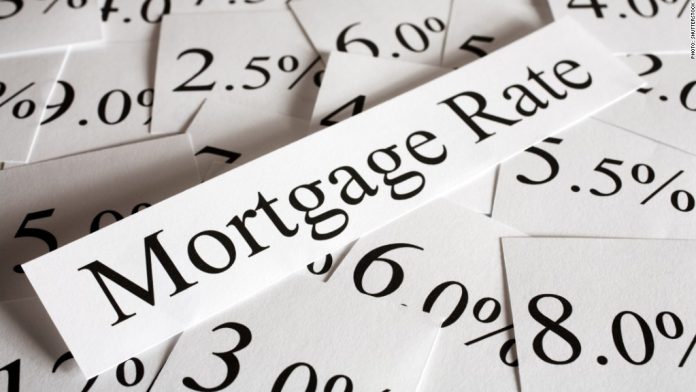
After last week’s dip, mortgage rates returned to the level they had been much of the past two months.
According to the latest data released Thursday by Freddie Mac, the 30-year fixed-rate average rose to 3.11% with an average 0.7 point. (A point is a fee paid to a lender equal to 1% of the loan amount. It is in addition to the interest rate.) It was 3.05% a week ago and 2.67% a year ago.
Aside from last week and the one week in November when it dropped to 2.98%, the 30-year fixed average has hovered around 3.1% for the past eight weeks.
Freddie Mac, the federally chartered mortgage investor, aggregates rates from around 80 lenders across the country to come up with weekly national averages. The survey is based on home purchase mortgages. Rates for refinances may be different. It uses rates for high-quality borrowers with strong credit scores and large down payments. Because of the criteria, these rates are not available to every borrower.
The 15-year fixed-rate average ticked up to 2.33% with an average 0.7 point. It was 2.3% a week ago and 2.17% a year ago. The five-year adjustable rate average moved higher to 2.41% with an average 0.5 point. It was 2.37% a week ago and 2.71% a year ago.
“Mortgage rates have effectively been moving sideways despite the increase in new covid cases,” Sam Khater, Freddie Mac’s chief economist, said in a statement. “This is because incoming economic data suggests that the economy remains on firm ground, particularly cyclical industries like manufacturing and housing. Moreover, low interest rates and high asset valuations continue to drive consumer spending.”
The yield on the 10-year Treasury, which had hovered below 1.5% much of December, grew to its highest level in a month on Wednesday. It closed at 1.55%. Mortgage rates tend to follow the same path as long-term bond yields, though that has been less the case recently because of the Federal Reserve’s intervention in the market.
Yields rise when investors are selling Treasurys. When bond prices fall, yields go up because investors are demanding more in return for holding them.
“Investors have reacted with increasing optimism following initial caution in response to the emergence of the omicron variant, even as case counts grow,” said Danielle Hale, chief economist at Realtor.com. “This is reflected not only in stocks hitting record highs, but also in rates for 10-year Treasurys, which surpassed a 1.5% yield on Wednesday for only the second time in December.”
As yields rise, Hale expects mortgage rates to go up as well.
“If higher rates in longer-term Treasurys can be sustained, which will likely require stable or improving news around omicron and covid, that will mean higher mortgage rates for home buyers,” she said. “However, this will also likely mean a strong economic backdrop in the form of a robust job market, which will help home buyers better face the hurdle of higher housing costs.”
The Mortgage Bankers Association did not release data on mortgage applications this week because of the holidays. The results for the weeks ending Dec. 24 and Dec. 31 will be released on Jan. 5.
(c) 2021, The Washington Post · Kathy Orton
{Matzav.com}












We refinanced our mortgage at 2 1/8 percent. Between that and the stock market boosting our retirement funds, we will be able to retire early. Thank you Joe Biden and Jerome Powell for keeping interest rates low!!!